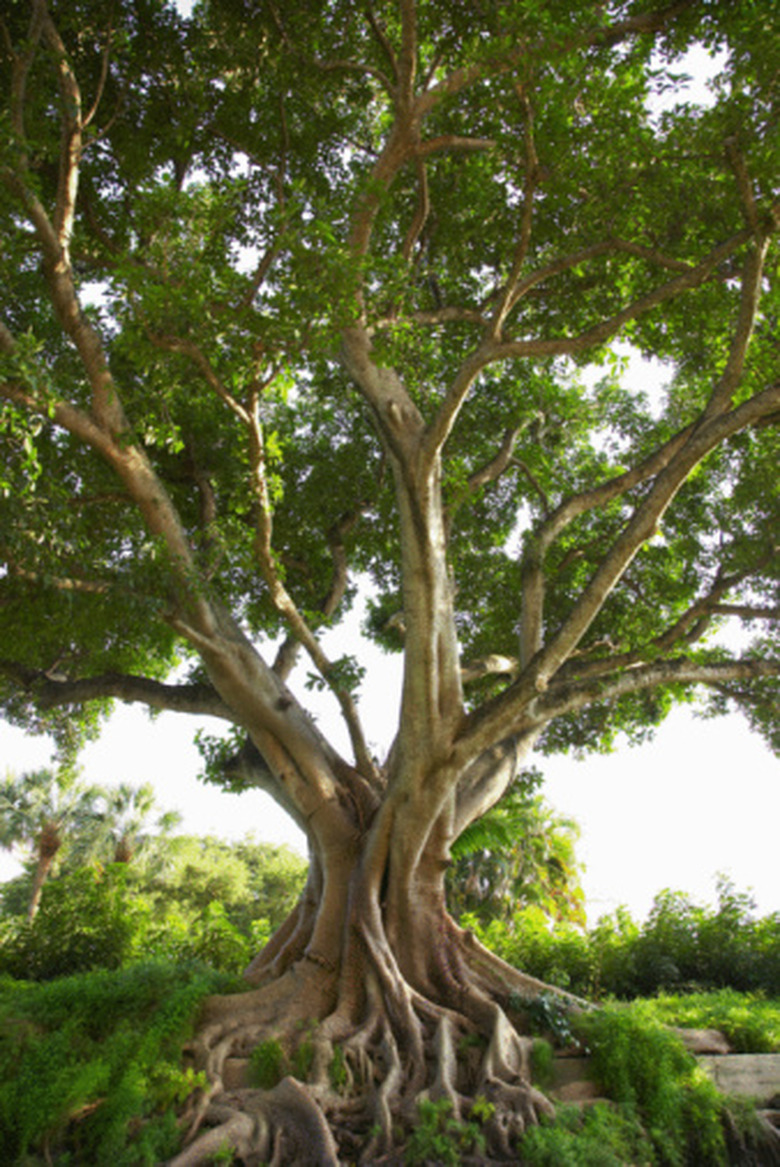What Kind Of Fertilizer For Fig Trees?
Fig trees (Ficus carcia) are fruit-bearing and relatively easy to grow in the right climates. They enjoy warmth and won't tolerate hard freezes during winter. They also require little or no fertilizer, often suffering more injuries during winter from extreme cold if the trees are fertilized heavily.
Type
In general, fig trees require little or no fertilizer. In fact, soil fertility isn't a big factor in growing healthy fig trees — but they do require very well-draining soil. If you need to feed your fig trees, several different fertilizer options exist. Use a basic, complete fertilizer like a 10-10-10 NPK formula or a nitrogen-only fertilizer.
- Fig trees (Ficus carcia) are fruit-bearing and relatively easy to grow in the right climates.
- If you need to feed your fig trees, several different fertilizer options exist.
Amount
Depending on the type of fertilizer you choose, apply a total of 1/2 to 1 lb. of actual nitrogen per year. If you use a complete 10-10-10 NPK formula, apply 1/2 lb. yearly. Avoid applying too much fertilizer, especially late in the growing season. Carefully read and follow the dosage and application instructions on the fertilizer label.
Timeframe
Fertilize your fig tree only if the branches grew less than 12 inches the previous year. If the fig tree is growing sufficiently, don't apply fertilizer. When you must apply fertilizer, do so beginning in late winter or early spring through about midsummer. Divide the fertilizer into three or four evenly spaced separate applications. Stop applying fertilizer before late summer so that the fig tree's growth can slow down for winter to prevent cold injury.
- Depending on the type of fertilizer you choose, apply a total of 1/2 to 1 lb.
- If the fig tree is growing sufficiently, don't apply fertilizer.
Considerations
Don't apply fertilizer at the time of planting the fig tree. Remember that regular fertilizing is usually necessary only when you're growing the fig tree in a pot or in sandy soil. Too much nitrogen promotes excessive vegetative growth and poor fruit production or failure to ripen. In addition to fertilizer, a good practice for fig trees is to spread a 4- to 6-inch-thick layer of organic mulch like straw on the ground around the fig tree. The mulch will preserve soil moisture and insulate the fig tree's roots during winter. Reapply the mulch as needed to maintain the layer's depth each year.
